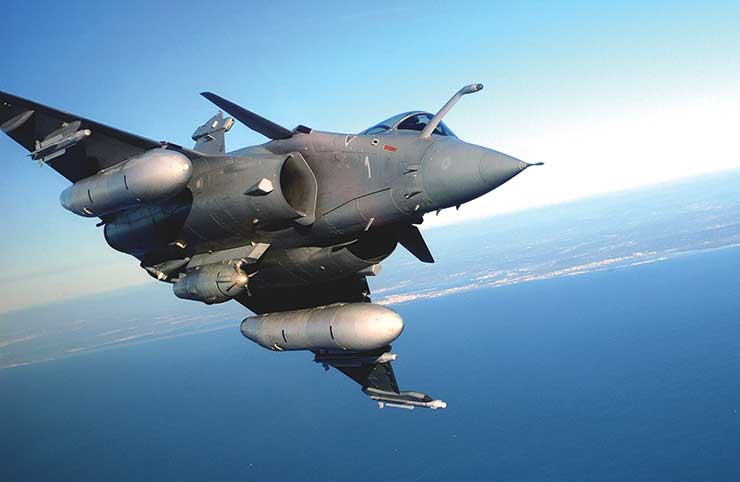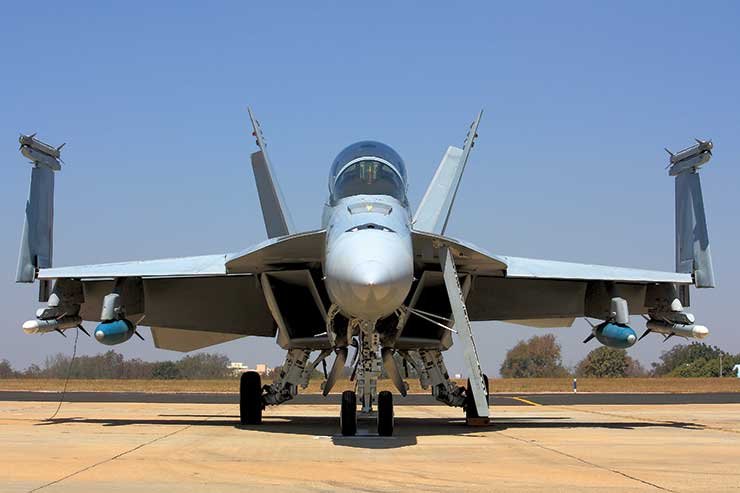
The ongoing Russia-Ukraine war, now in its fifth month, has major lessons for India and rest of the world, not only in terms of the future of war and military operations but more importantly on the importance of military capability and technological sovereignty. The war will be studied for its various aspects: the role and effectiveness of air dominance and air defence, Ukrainian use of anti-tank missiles and shoulder-fired missiles, anti-shipping missiles, heavy use of artillery, urban warfare, Russia’s use of long-range and hypersonic precision missiles, it’s artillery dominated grinding nature of land campaign, use of drones by both sides, communications and the use of satellite networks, and the overbearing influence of ISR. The geopolitical fall-out of the war on India needs to be considered carefully. The comprehensive and large-scale sanctions imposed on Russia is already resulting in multi-dimensional impact on rest of the world.
The USA and its allies have pressurised India to not only denounce Russia’s military action against Ukraine but to go along with their sanctions by severing India’s military armament and energy relationship with Russia. When analysed carefully, we can see that the real objective of their strategy is to severe economic and military-industrial relations of the former Soviet republics to Russia and incorporate them into the western economic system. This has been done successfully in countries like Poland, Czech Republic, Baltic states, Rumania, and now is being attempted in Ukraine. Sanctions is an important tool for this strategy. While the war is on in Europe, India’s lucrative defence market has been the primary objective in this strategy ever since 2014 and later when CAATSA was introduced. India has been careful to safeguard its strategic relations with not only Russia but the US and Western Europe as well. The US has gone on record to say that its objective is to wean India away from its reliance for military imports from Russia. The Ukrainian crisis has given a sense of urgency to the USA about its India strategy.
Prime Minister Modi and External Affairs Minister Jaishankar must be complimented for their deft handling of the crisis and navigating India’s interests firmly against the pressures from the West. However, the possible problems that these issues would create in the future are substantial. This necessitates India to finetune its strategies for control over critical technologies and recognise the urgency of it. There is no overnight solution in this game. ‘Make in India’ strategies and support systems must be driven by well-crafted, long-term oriented, and consistent strategies. The fighter aircraft domain is an important area where well-thought decisions are of critical importance to national security. India has strategic partnerships with many countries including the USA, Russia, France, UK, Israel, and Germany.
One expects that these strategic partnerships should result in access to critical defence technologies for India. There cannot be a bigger fallacy than this assumption. The leading defence technology countries are fiercely protective of their technology-leadership positions. The reason is that a country’s military industrial complex (MIC) provides not only huge economic benefits through market dominance but more importantly the MIC gives these countries enormous power and geopolitical leverage in the international system. Since India will be a major importer of high-end weapon systems for the foreseeable future, it’s defence technology capabilities can be enhanced by strategic leveraging of its defence imports. Successful leveraging will need to factor various methodologies – technology diffusion through manufacturing, joint ventures involving codesign and codevelopment, joint ventures involving license manufacturing for global market, MRO, R & D, and reverse engineering.
The most important element, however, is extracting or leveraging a contract in terms of desired technologies, state-of-the-art production, and market access. This will depend on hard negotiations, which again is dependent on economies of scale. This is an area that India has not managed well so far. Invariably our acquisitions have been piecemeal and in smaller lots thereby giving advantage to the vendor in terms of price and a low level of technology access or minimal technology transfer.

India’s political leadership has been doing a balancing act with respect to defence modernisation and budget constraints. The defence budget has, while the numbers may show an increase, declined to an all time low of less than 2% of the GDP. More than modernisation itself, the challenge of sustaining minimum operational strength is proving difficult. The IAF’s fighter squadron strength is at a low of 32 squadrons as against the authorised strength of 42 squadrons. Navy air arm is deficient of fighter aircraft to operate on the new aircraft carrier. Adversely impacted by the pandemic and the global economic slowdown due to the Ukraine war, the Indian government has announced the curtailment of its long-pending 114 fighter aircraft (MRFA) acquisition for the IAF as also the 57 aircraft requirement projected by the Indian Navy. IAF’s 114 aircraft is to be reduced to 57 aircraft while the Navy’s requirement is reduced to 26. Both these acquisitions are expected to be done through government-to-government deals. By all indications the French Rafale and the American Boeing’s F-18 Super Hornet seem to be the serious contenders.
It is said that the number of aircraft orders are not reduced but being done in two phases. The first part will deal with the process of ‘buy global and make in India’ while the second part will be orders placed directly on the Indian manufacturer. This plan seems more influenced by domestic politics. The argument that the second phase order will be in Rupees is incorrect as the manufacturer will continue to pay in foreign exchange not only for royalties but for several procurements such as materials, components, and aggregates. India will gain very little in this two-stage process while the foreign country and the vendor will gain immensely. It will also place India in a weak position with respect to negotiations. The procurement costs will be high.
But there are bigger issues to be considered. The fact that the Indian Navy needs a twin-engine fighter aircraft while the IAF is essentially looking to fill the MMRCA gaps should force the decision makers to seek optimal solutions by combining the two. Firstly, if both contenders meet the operational requirements, then selecting a common platform would bring significant savings to the country. Secondly, if order sizes are small, translating into local manufacture becomes problematic in many ways.

The original MMRCA case was for 126 aircraft with a provision of 18 aircraft as off-the shelf buy and 108 aircraft to be manufactured within the country. This was an optimal number that would have enabled the necessary time and investment to set up production infrastructure, enough to start from assembly to the final phase of production from raw materials. Such a sequence allows for technology absorption, skill development, and enable indigenisation of various components. It also allows for the Indian side to negotiate better prices and leverage to our advantage. We scrapped this plan and instead went in for direct purchase of 36 aircraft. While the IAF is highly satisfied with the aircraft in terms of operational performance one must examine the larger issues.
The two squadrons are based in two different bases with the technical and maintenance infrastructure investment for each base, which at the minimum is sufficient for accommodating two to three squadrons in each base. Besides, as these aircraft were off-the shelf buys, India did not gain by way of technology transfer or creation of any state-of-the-art production facilities. Instead, since the numbers were small the procurement was bound to be expensive. While interacting with the French industry, Dassault made it clear that setting up production facility was unviable if the orders were in two or three batches of 36 to 50 aircraft as a break in production run was unacceptable. What was implied was that a guaranteed production run of 100 aircraft was necessary for economic viability of the manufacturing program.
The naval procurement of 26 or 57 aircraft does not make indigenous production an economic viability. Similarly, the IAF’s requirement, if made in two phases of separate orders or procurements, will make manufacturing in the country economically unviable. Hence, it would make eminent sense for the government to choose one type of aircraft for both the IAF and the Indian Navy, which would give a larger number to make indigenous manufacturing an economically viable and strategically successful prospect. It will enable the government to drive a hard bargain, leverage access to critical technologies and derive the technology transfer on our terms. Additionally, the selected vendor could become a critically accountable support agency to the AMCA program. India’s acquisition process has a track-record of enormous delays, indecisiveness, and the country losing out big time due to short-sighted piecemeal procurements. Correct lessons must be derived and applied if India is to become truly a globally competitive defence manufacturer and achieve control over critical technologies.
–The writer is a former Deputy Chief of Integrated Defence Staff for Policy, Plans, & Force Development (DCIDS – PP & FD). He is currently the President of The Peninsula Foundation, a Chennai-based public policy research think tank.The views expressed are personal and do not necessarily reflect the views of Raksha Anirveda








